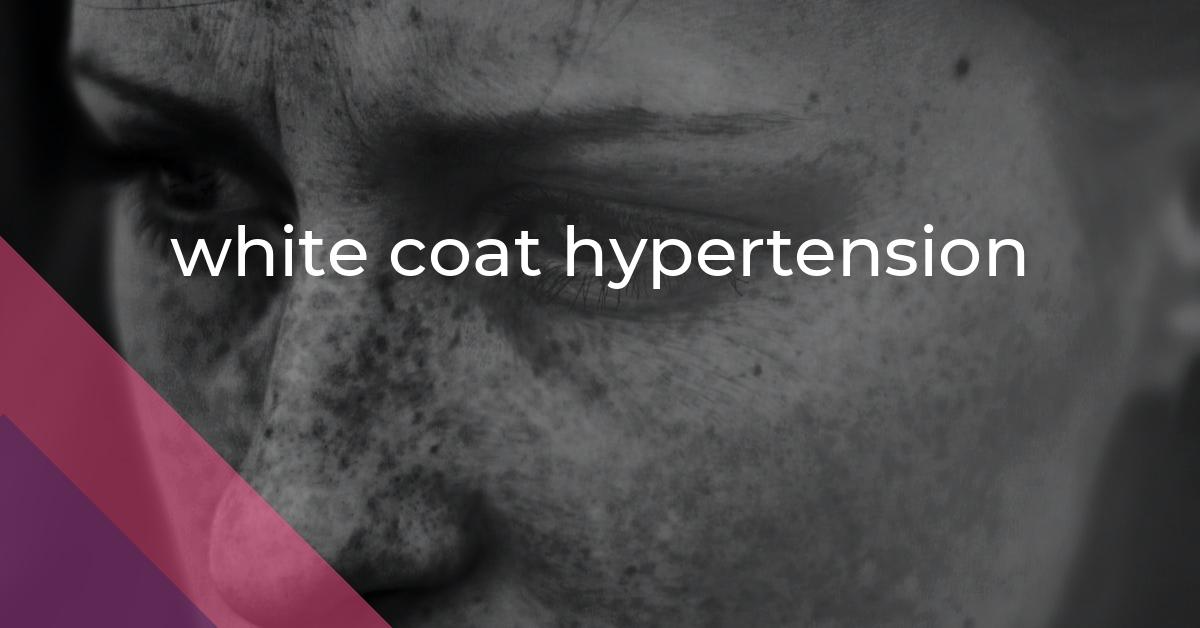white coat hypertension: Idiom Meaning and Origin
What does ‘white coat hypertension’ mean?
The idiom white coat hypertension refers to the temporary rise in blood pressure that occurs when someone is being examined by a doctor or medical professional. This increase in blood pressure is often due to the individual feeling anxious or stressed in a medical setting.

Idiom Explorer
The idiom "white rider" refers to a person or situation that is seen as a hopeful or positive influence, often bringing aid, support, or good news.
The idiom "white on rice" means being extremely close or attentive to someone or something. It implies being on top of or monitoring a situation with great intensity and focus.
The idiom "white-knuckle" refers to a state of extreme anxiety or tension. It is often used to describe a situation or experience that is thrilling or terrifying, causing one to tightly grip an object, turning one's knuckles white.
The idiom "what the doctor ordered" is used to describe something that is exactly what is needed or beneficial in a certain situation, just like a prescription from a doctor. It implies that the item or action is highly beneficial and brings relief, satisfaction, or improvement.
The idiom "wet the bed" means to fail or make a serious mistake, particularly when under pressure or in a high-stakes situation.
The idiom "wet one's pants" means to involuntarily urinate due to extreme fear, excitement, or laughter. This phrase is often used figuratively to describe someone who is extremely scared, excited, or amused.
War of nerves is an idiom that refers to a intense and often psychological battle of wills where opponents use mental pressure, intimidation, and manipulation to gain advantage or break the resolve of the other party.
"Up a height" is an idiom that means feeling anxious, worried, or in a state of panic. It is often used to describe a person who is emotionally or mentally distressed about a situation or problem.
The idiom "under the weather" is used to describe someone who is not feeling well or is sick.
Uncovering Hidden Anxiety
White coat hypertension is a temporary increase in blood pressure that some people experience when they visit a doctor or healthcare setting. The term "white coat" comes from the white coats that doctors, nurses, and medical students wear. Seeing healthcare providers in these coats can sometimes make patients feel anxious, causing their blood pressure readings to be higher than normal.
White coat hypertension is a specific type of situational high blood pressure that only occurs during doctor visits or similar situations. It is distinct from other forms of hypertension.
Studies and discussions have examined white coat hypertension in the medical community. Research suggests that this condition may be related to the body's natural "fight or flight" response when faced with a potentially stressful situation, such as a medical examination. The fear, anxiety, or nervousness some people feel when encountering medical professionals can temporarily increase their blood pressure.
Healthcare providers have adopted various techniques to mitigate the effects of white coat hypertension. One common approach is to measure blood pressure multiple times during a visit to get a more accurate reading. Some providers also encourage patients to monitor their blood pressure at home using portable devices to better understand their true blood pressure levels outside of clinical environments.
Although white coat hypertension is typically harmless, it can have implications for patients' overall health. Some studies suggest that individuals with white coat hypertension may be at a higher risk of developing sustained hypertension later in life. It's important to accurately diagnose hypertension and differentiate between white coat hypertension and persistent hypertension.
The idiom "white-knuckle" can be related to white coat hypertension. The increased blood pressure experienced during a doctor visit may cause patients to grip the arms of their chairs tightly due to anxiety or fear. This white-knuckle response is a physical manifestation of the emotional stress associated with the medical environment.
The idiom "nervous hit" can also be associated with white coat hypertension. The spike in blood pressure during a medical visit can feel like a "hit" of nervousness or anxiety. The body's physiological response to stress can be intense, leading to an adrenaline rush that contributes to the temporary increase in blood pressure.
Furthermore, the idiom "up a height" is relevant to white coat hypertension. The experience of having one's blood pressure rise during a doctor visit can make some individuals feel like they are "up a height" or in a heightened state of anxiety. This feeling can contribute to the temporary increase in blood pressure observed in white coat hypertension.
Finally, the idiom "adrenaline rush" is another related phrase. The anxiety and fear associated with doctor visits can trigger an adrenaline rush in some individuals. This surge of adrenaline can lead to a temporary increase in blood pressure. The "fight or flight" response activated by the body in response to stress can contribute to the phenomenon of white coat hypertension.
White coat hypertension is a temporary increase in blood pressure experienced during medical visits. It is caused by anxiety or apprehension associated with encounters with healthcare professionals. Although generally harmless, it can indicate potential long-term risks. To mitigate its effects and ensure accurate readings, healthcare providers employ various strategies. Understanding the related idioms of "white-knuckle," "nervous hit," "up a height," and "adrenaline rush" can enhance our comprehension of this phenomenon.
Example usage
Examples of how the idiom "white coat hypertension" can be used in a sentence:
- She always experiences white coat hypertension whenever she goes for her annual check-up at the doctor's office.
- His blood pressure readings are consistently high at the hospital but normal at home, indicating a case of white coat hypertension.
- The patient's fear and anxiety when seeing a medical professional often leads to white coat hypertension during medical appointments.
More "Medical" idioms



